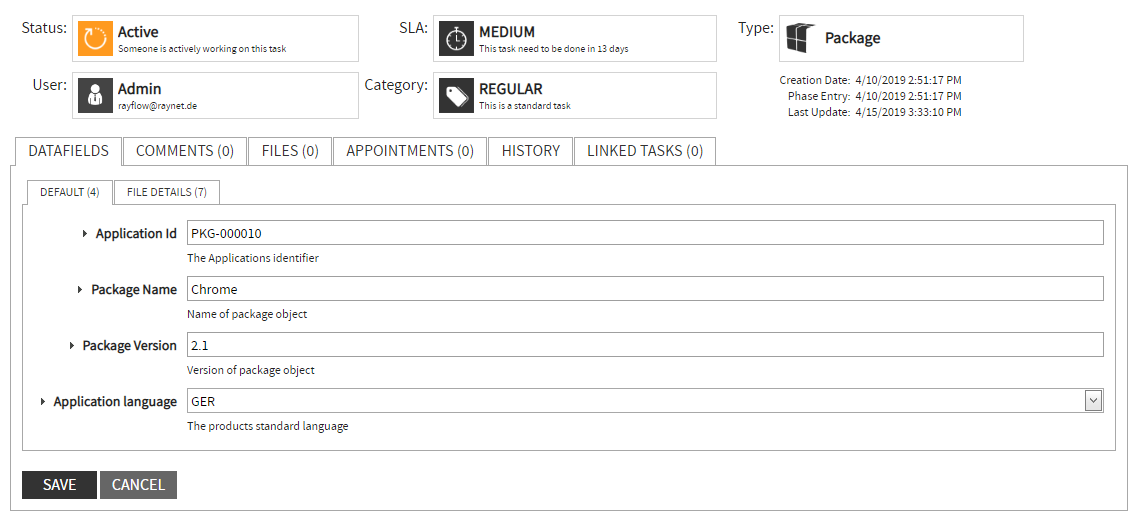RayFlow is a modular application where functional objects are combined to set up an environment that provides a platform to work on diverse workflow processes. This modular architecture of RayFlow results in the flexibility to be configured to match specific end user requirements. This section of the document provides a brief introduction on the key objects in RayFlow.
 Project
Project
A workflow project in RayFlow is represented as a series of phases and sub-phases from the order to the completion of a task. The configured phases are organized in the process navigation bar on the top. The order in which phases appear depends on the phase order of a particular task as well as the level of visibility/permissions that a particular user has.

 Phases
Phases
A phase is a part of a series of phases in a workflow project and contains any number of tasks. A user with the permission to view, edit and download tasks in a phase can see information (properties, files, comments) and even create appointments and track a selected task. A phase can have any number of sub-phases which can be independently configured.

 Task
Task
Every task in a project walks through the defined workflow of that project. All necessary information needed to work in a specific phase is listed in the properties section of a task.
It has a current status which can be changed by triggering phase specific events. The SLA is an indicator to visualize if the work on a task is being performed in time.
A task, in the context of Raynet being a service provider in the field of application management, is software that goes through all phases of a best practice workflow, e.g. evaluation, packaging, quality assurance, user acceptance, and deployment.

 Status
Status
Status defines the current state of a task within a phase. Every status can have a unique icon to easily identify it.
The default statuses are:
•Open: Task is currently not assigned to any user
•Active: Task is assigned and is being worked on
•Delete: Task is deleted from the workflow
•Finished: Task has been completed

 Events and Actions
Events and Actions
Events are defined per phase and can be triggered by users. By triggering an event, the status of a task will be changed. Every event defines these status changes with actions. For example, the "finished" event is configured with two actions:
- Set the status in the current phase to finished
- Set the status in the next phase to open.

 Datafields
Datafields
Datafields are input fields that store information within a task. Every phase can provide different sets of datafields and even change the editability or visibility. For example, a datafield can be a mandatory field in one phase and an uneditable field in the next.
There are different types of datafields. Currently the following datafields are available:Textbox, Checkbox, Drop down list, Multi drop down list, Date, and Date and time.

 Users
Users
All users belonging to a project can be members of multiple groups. A user can be identified by a unique username and e-mail address. In addition, a user has optional information about name, last name, and company.
A user can also belong to multiple projects. After the login, a user can choose the project he wants to work on.
 Groups
Groups
A group can have one or more users as members. Within a group the permissions (view, edit, download) per phase and the accessibility of menus are defined. Users, which are member of the group, can access phases and menus only as defined.
Also the dashboard can be personalized and differ from group to group.
Every group has one of three types: Root, User, Manager or Administrator. This type grants members additional functionality like assigning other users to tasks, administer projects, etc.